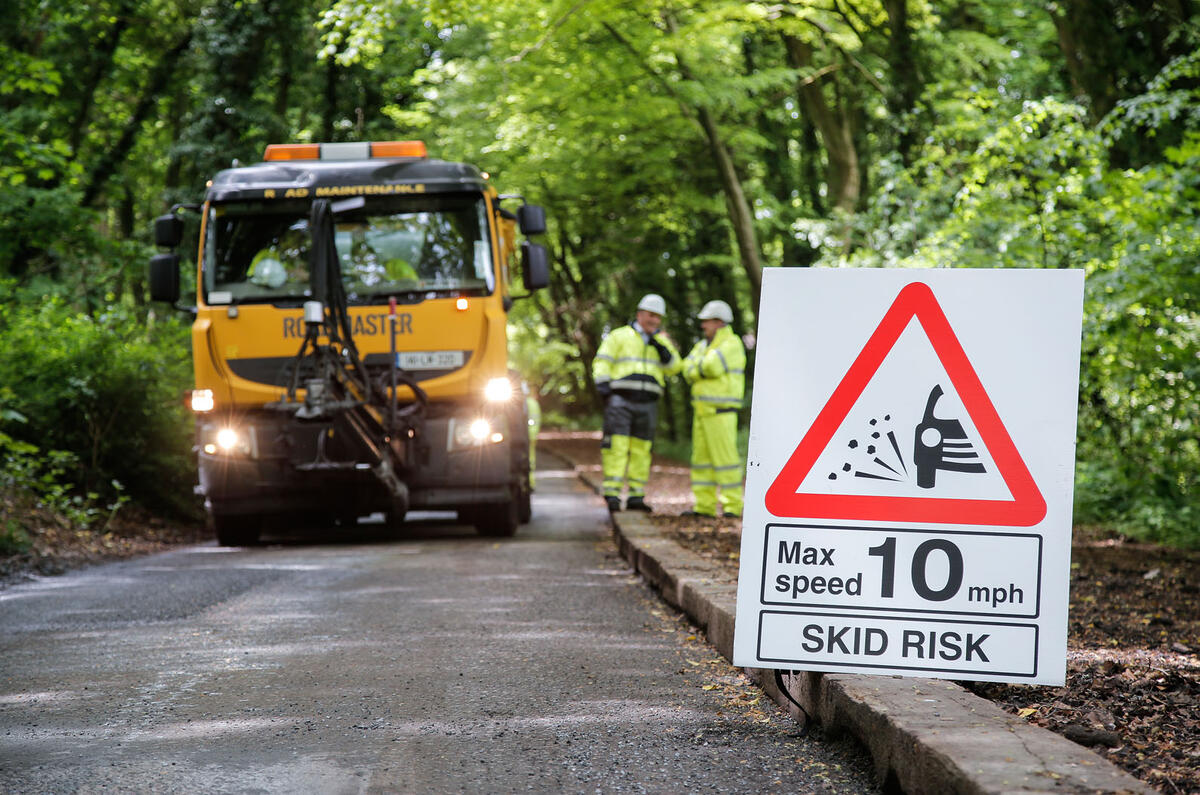The average pothole costs around £60 to repair. It’s estimated that there are more than one millon potholes in the UK. So, to repair them all would cost around £60 million.
That’s not that much, given that it’s every pothole in the UK, and the Government’s £15.2 billion kitty for resurfacing motorways and A-roads is some 253 times larger than the estimated cost of a fixing all those potholes.
Perhaps the Government is doing something wrong, then. Potholes are fixed routinely by councils, and yet there’s still a ninth as many of them as there are bicycles in Beijing, depending on your music taste.
Read more: Pothole insurance claim figures released; 10 most affected cars revealed
A spokesman for The Alliance of British Drivers told Autocar that estimating the number of potholes in the UK is an impossible task (good luck fixing them, then). He also said that roads aren’t built correctly, and therefore develop potholes.
He continued to point out that roads in other countries are often made with 6.0in of Tarmac as their top layer, where UK roads are often only finished with 2.0in of the black stuff.
So perhaps, instead of building our new roads with the same problematic amount of Tarmac as before, we should adopt a more European approach and build them deeper, and more durably. After all, we’re not the only country to get a little bad weather once in a while.
Read more: Pothole detection system showcased by Jaguar Land Rover
It will take time to resurface every road in the UK this way, but the money is there, the need is there, and the roads are there. All it needs now is some careful planning – because lord knows the Government is truly terrific at that – and patience from UK motorists as they find a detour while their local road is converted into a silky smooth, European-style, six-inch-deep tarmac road.
It seems though that the Government is in need of ideas. One man took to graffitiing certain shapes around his local potholes to urge the council to fix them. It worked, too. Send in your answers – serious or otherwise – and let’s get this problem sorted, Autocar style.





Join the debate
Add your comment
It's pretty simple
Then we have this uniquely British(?) situation when anyone in a hi-viz vest can dig up any road whenever they want and patch it over again in the most slapdash manner. Hence the bitumous patchwork quilt we all know and love so dearly.
Fix these two things and you're sorted.
This article is...
A spokesman (who?), for a hobby organisation, said in other countries (where?) they use a thicker layer of tarmac and, later on without any foundation, that becomes a "more European approach". That's a leap. Road building design and construction standards, within the EU, have been harmonised since 1992. Referring to Norway perhaps? (European, without being in the EU, you see).
2", 6"???
H=–16.05×(Log(N))2+101×Log(N)+45.8 was the actual number that you were looking for, where N is the design traffic load (in million standard axles, if you're interested). Round up to the nearest 10mm.
The design thickness of roads depends on a great many factors, but it will never be less than 100mm (that'll be around 4") for the top surface*. It 'can' be as much as 430mm thick. Design life, ground conditions, drainage, climate (minimum finishing surfaces are thicker in Scotland than in southern England), service conduits...the design of the hydraulic bound base material is far more critical to the sustainability of roads than merely pouring more tarmac on top of an already poor substrate. That's just a way of wasting tarmac, and poor substrate is as much, if not more of, a factor in the formation of potholes than just the thickness of the top surface.
* There will be, of course, instances where less has been used, but this will be an historic hangover, not the standard approach deficient to elsewhere in the world, where historic differences will occur too.
The issue of fixing potholes is one of resource and attitude. £60 to "repair" a pot hole is not enough. This will cover, at best, cleaning the hole, removing any lose debris, drying it out (as if) and then refilling without any other kind of intervention. That way madness lies. The surface around the holes, and all the substrate, needs to be cut out to at least 500mm around the perimeter of the hole, and to a depth of at least 500mm (or the bottom of the substrate, whichever is greater) and then reconstructed properly, with the top surface correctly feathered in to the surrounding, existing, surface. This costs more than £60. Any other approach will just see the hole reappear. I'm sure Amey are delighted, though, that council tax payers will help them see a healthy, and recurring, return on the investment for their fleet of Archway Roadmaster 295s.
The problem with putting half
you are also forgetting the